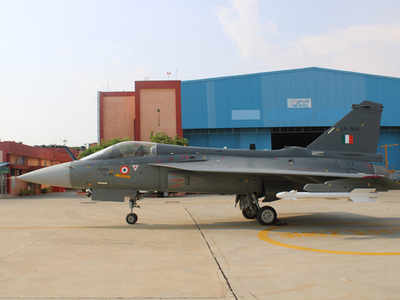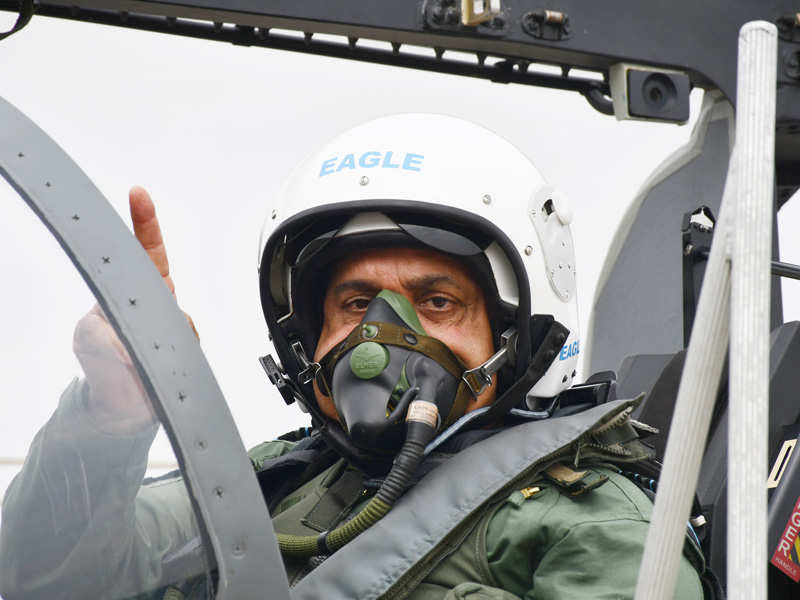
IAF commissions second squadron of Tejas fighters with chief flying solo sortie
by Rajat PanditNEW DELHI: The IAF commissioned its second squadron of the indigenous Tejas light combat aircraft on Wednesday, even as the Rs 37,000 crore contract for production of 83 more such single-engine fighters by Hindustan Aeronautics is set to be inked in the July-September timeframe.
The 18 Squadron, nicknamed the “Flying Bullets”, became operational with an initial four Tejas fighters at the Sulur airbase in Tamil Nadu, with Air Chief Marshal R K S Bhadauria taking to the skies on a solo sortie to demonstrate the IAF’s commitment to the home-grown fighter.
Flying Officer Nirmaljit Singh Sekhon of the 18 Squadron was posthumously decorated with the Param Vir Chakra, the country’s highest war-time gallantry medal, during the 1971 conflict with Pakistan. The squadron was subsequently “number-plated (temporarily retired)” in 2016 before being resurrected now for the Tejas fighters.
The first squadron of 16 Tejas fighters, the 45 Squadron or “Flying Daggers”, is also based at Sulur after being commissioned in 2016. While it is equipped with the Tejas fighters in the IOC (initial operational clearance) configuration, the 18 Squadron will get the more advanced FOC (final operational clearance) version.

“The FOC variant additionally comes with air-to-air refueling capability, close combat guns, additional fuel drop tanks, beyond visual range (BVR) missile capability, updated avionics and flight control software suite,” said HAL chief R Madhavan.
These two squadrons will get 40 Tejas Mark-1 fighters, which were all originally slated for delivery by December 2016 under two contracts worth Rs 8,802 crore inked earlier.
The 83 Tejas Mark-1A jets, the deliveries of which will begin three years after the contract is inked, are slated to have 43 “improvements” over the Mark-1 jets to improve maintainability. The jets will also have the AESA (active electronically scanned array) radar to replace existing mechanically-steered radar, longer-range BVR missiles and advanced electronic warfare to jam enemy radars and missiles.
After these 123 fighters, the IAF is also looking to induct 170 Tejas Mark-2 or the MWF (medium weight fighter) jets with more powerful engines and advanced avionics.
But the Tejas Mark-2 and the indigenous stealth fifth-generation fighter aircraft project called the advanced medium combat aircraft (AMCA) will take several years to fructify. For now, IAF is banking upon the first 123 Tejas to add to the strength of its fighter squadrons, which is down to just 30 (each has 18 jets) when at least 42 are required for the requisite deterrence against Pakistan and China.